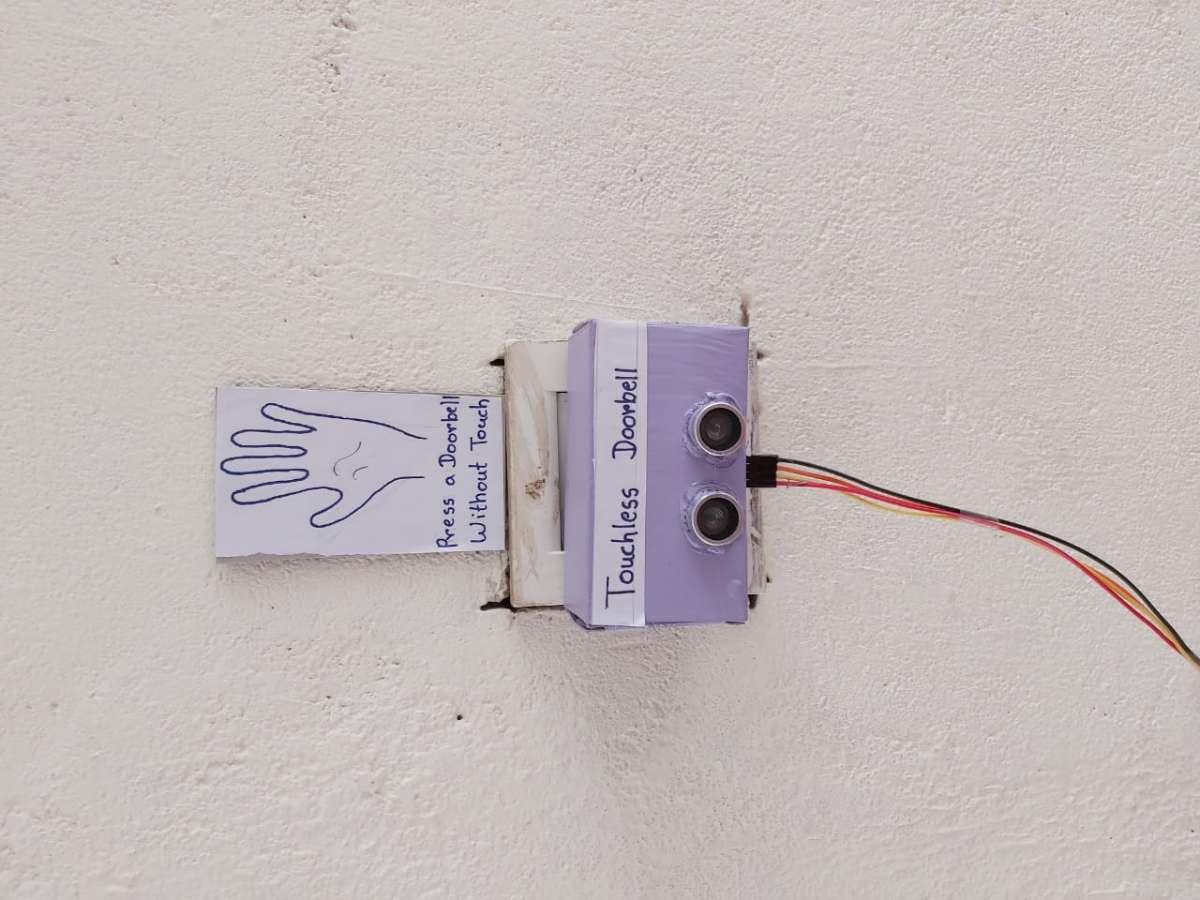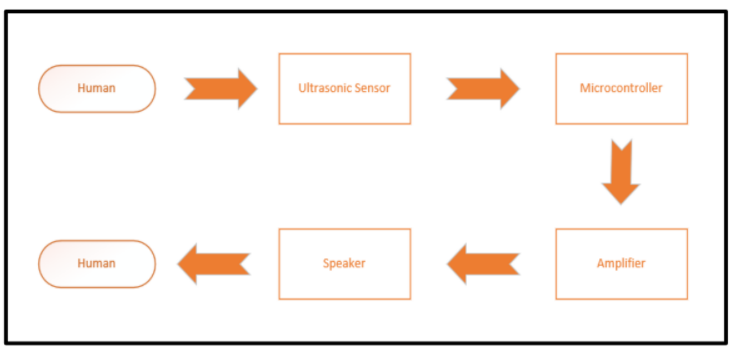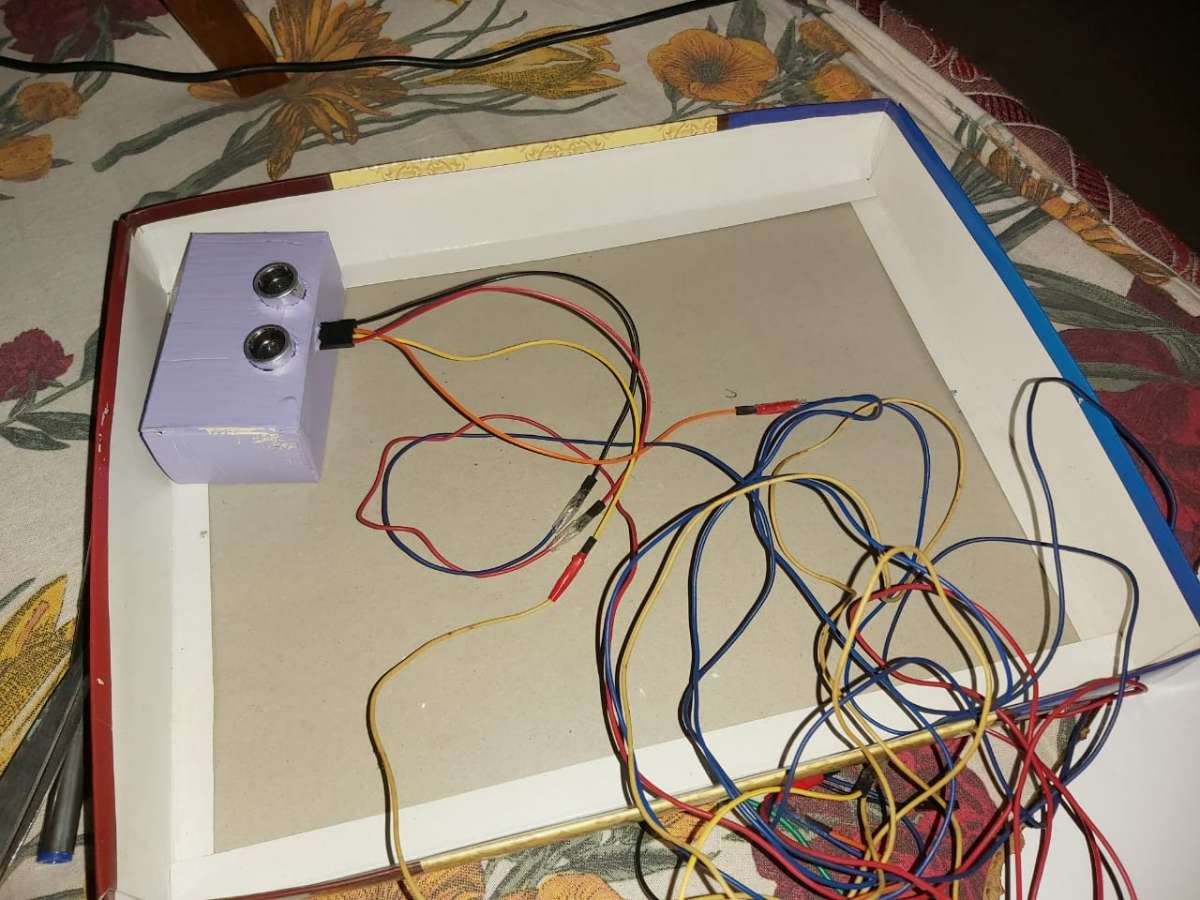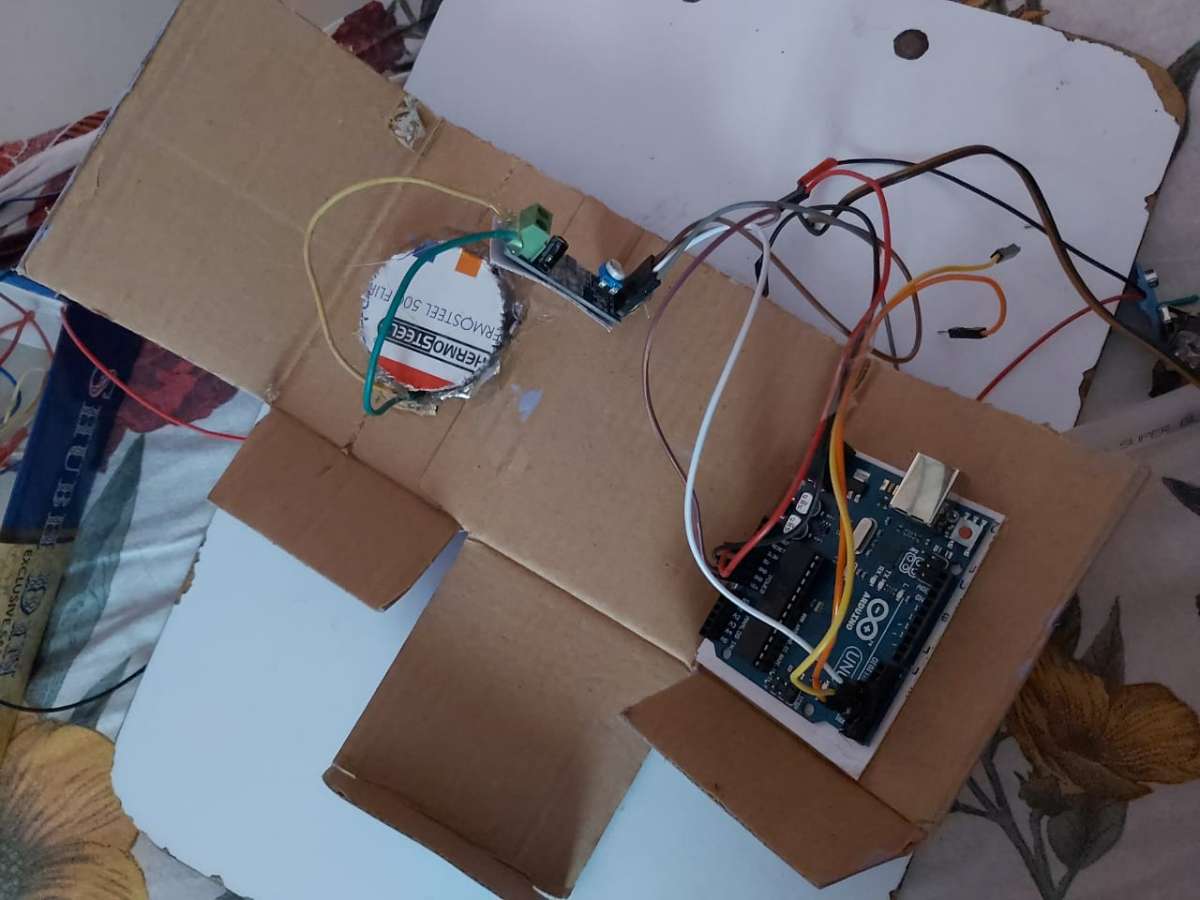1.Motivations
For this project, the main reason for our motivation was the ongoing pandemic. In this
situation people are following social distancing norms and avoiding touching random surfaces
in social places like any button, latch, walls, benches, etc.
In today's day and age Doorbells are an important part of every house. It is much easier to
press a single button to call the person in the house than banging the door continuously. We
take this tech a step further by including a sensor-based system which gives more ease to the
person outside the house . With the help of this tech, the person outside only needs a flick
of hand in front of the sensor and the circuit will detect it and ring the bell.
That’s why we have come forward with the idea of the touchless doorbell. We have worked
in small steps, and in some long and focused sessions towards this goal. Small steps will take
you far. Working slowly, consistently, and diligently was our strategy. And that’s what we
have adhered to.
PROBLEM STATEMENT
To develop a touchless door-bell system with sensor-based technology to
reduce the spread of contagious diseases like Covid-19
Objectives:
1) To find an appropriate sensor for detection of human.
2) To design the touchless door-bell using the selected sensor.
3) To deploy the touchless door-bell.
4) To test the working of the touchless door-bell.
Pandemic serves worst for all and affected livelihood in many ways.
Social distancing is the one of the best methods to escape from COVID-
19.
But we can't avoid some emergency visits to some homes. When we
arrived at Infront of a house, first we search the doorbell button/ calling
bell button. And press the button. But in this special situation this doorbell
button can cause the virus to spread.
When some infected person presses the button the virus hold on that
button and when a non-infected person touch this button the virus spread
to that person. We can avoid this danger by using the touchless doorbell.
The existing doorbell can convert to a touchless doorbell. Touchless
automation is the next step to ensure safety of each family members and
loved ones. To avoid the spread of communicable disease through contact.
Touchless Doorbell is a unique idea and a next step towards safer future.

Touchless Doorbell system is divided into multiple blocks, five in total, Microcontroller block,
Sensor block, Amplifier block, speaker block and the power supply block. The figure 3.1 depicts
the block diagram of proposed doorbell.

At the center of all is the micro-controller module. This is the brain of the system it does all the
computational work required for the working of the Touchless doorbell. All the calculations
required to detect the press of the doorbell are done by the micro-controller. When the bell is
pressed, the micro-controller also generates the melody for the doorbell.
The Sensor module is used to detect the presence of an obstacle in front, here it detects the human
hand. It is connected with the microcontroller, to send necessary data to perform the distance
calculations required to detect the press of the bell.
The Microcontroller communicates with the sensor to detect the presence of an obstacle. Once
detected the microcontroller operates the speaker to produce a pleasing doorbell tune. Since the
signal voltage produced by the micro-controller is low, an amplifier is used to boost the signal so
that the speaker is able to produce a loud and clear sound.
A DC power supply is used to convert mains voltage 220 – 240V AC to usable 5V DC voltage for
the doorbell unit. The Power supply works by stepping down the high mains voltage to a lower
level. Then this low AC voltage is rectified, filtered and regulated to stable DC voltage.
All the blocks including the micro-controller, sensor and the speaker-amplifier are powered by the
power supply module.

3.2)Sequence Diagram
Working of the doorbell is divided into six parts. The process starts with the interaction between
human and the ultrasonic Sensor. The ultrasonic sensor detects the obstacle in front. It then sends
a signal to the Microcontroller. The flow of working of the doorbell is represented in the figure
3.3.
The Microcontroller uses the pulse sent by Ultrasonic sensor to calculate the distance between the
obstacle and the sensor. It uses this calculated distance to determine if someone wants to ring the
bell or it is just a misdetection by the sensor.

If the detected distance is between selected variable range, it generates a doorbell melody and
transmits it to the amplifier.
The amplifier operates the speaker with the gain and volume parameters that are set. The Speaker
placed inside the doorbell generates a pleasing melody to get the attention of the house members.
Assembling:
I have listed few images







Algorithm and flowcharts
Algorithm for the Touchless doorbell is simple and elegant. The microcontroller follows steps in order to be
used in the touchless doorbell. The algorithm consists of eight steps.
Algorithm for the working of the touchless doorbell is given below:
1. Power On, start the doorbell.
2. Set the LED and Speaker pins to LOW. And set the trigger pin of the sensor to low.
3. Set the trigger pin of the ultrasonic sensor HIGH for 10 micro seconds and then set it LOW.
4. Detect the echo pin of the ultrasonic sensor.
5. Calculate time for detection on Echo pin pulse.
6. Calculate distance between the sensor and object using formula distance = (speed of sound * time) / 2
7. Send a signal to the speaker from Arduino if the distance measured is between 0 – 20 cm.
8. Interrupt the input of ultrasonic sensor till the bell is ringing.
9. Loop from steps 2 – 7 until the power is turned off.
The flowchart represents each step in more detail. It represents the steps we need to take while writing a
program for the touchless doorbell. Following each step, a proper working code is written in the Arduino
IDE using C language.
https://drive.google.com/file/d/1nC02NvrTAXPK1e7BAy9zGAxgY5ckaVcr/view?usp=sharing
CONCLUSION & FUTURE SCOPE:
The designed Touchless Doorbell is detecting a person who is visiting a home without touch. To set variable
distance user can adjust is by its own. In general, we have sated the distance of person detection as 15 cm. and we
have tested for 10-12 distances in the described range and the result was as per expectations. This product functions
automatically when a person comes in range of the sensor of touchless doorbell. We also had taken care that the
product should be economically affordable. We can place it anywhere we want and also the installation is pretty
simple. The setup of wireless doorbell doesn’t require any internal wiring.
This project is based on designing and implementation of doorbell with sound controlled. Doorbells are a common
convenience in homes, giving visitors a way of announcing their presence and preventing residents from missing
deliveries or guests. Doorbells are simple pieces of home that let you know a visitor has arrived. They're useful if
you are too far from the front door to hear someone knocking and preventing residents from missing deliveries or
guests. Doorbells are simple pieces of home equipment that let you know a visitor has arrived. They're useful if
you are too far from the front door to hear someone knocking. [18]
This product is also compared to already existing models of this kind and it has been found that our product
contains some unique features such as its variable distance ranging. Overall, we can say that the product serves its
purpose and is comparatively better than its competitors in quality as well as economically beneficial.
The future scope of the product is we can add a system which composed of the Doorbell interfaced with Raspberry
pi, whoever press the doorbell, the camera gets triggered and capture their face and it checking for their face with
its database which already has registered faces of family members, if it is an authorized person (family members)
door will open, otherwise it sends an photograph of the intruder to Family members. The future scope for this
project is tremendous. This concept of “Touchless Doorbell” is very useful in fire safety departments, Railroad
crossing, School bells and Alarm in industrial plants etc. [2] This system is suitable for securing doors. This tech
can also be used in home security systems.

